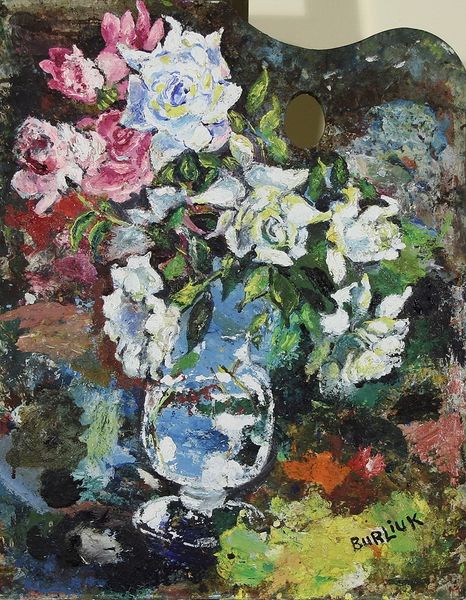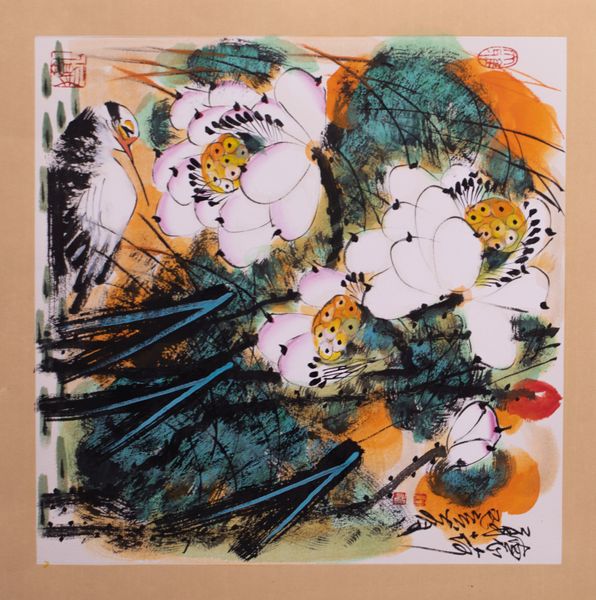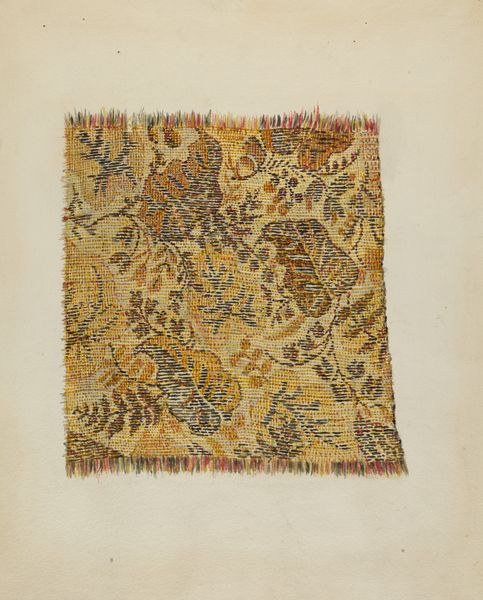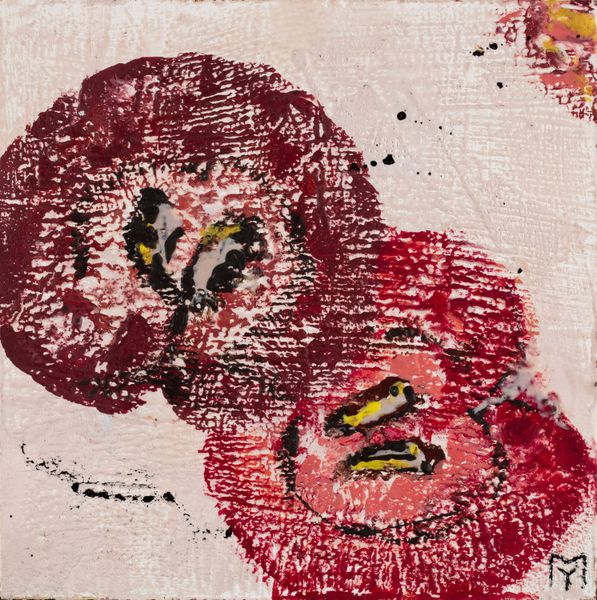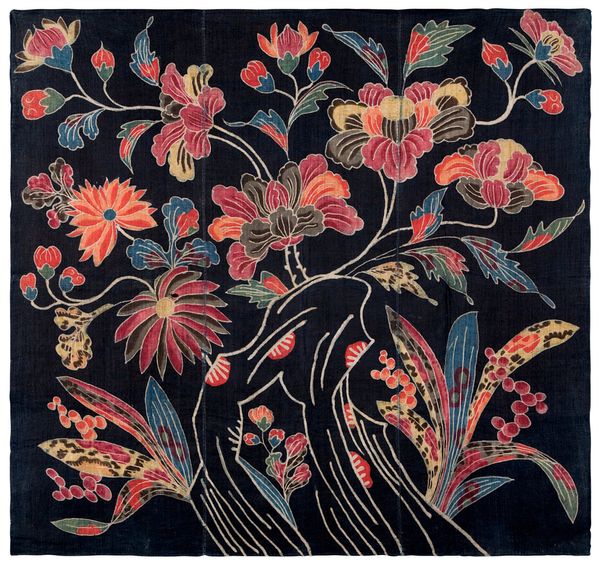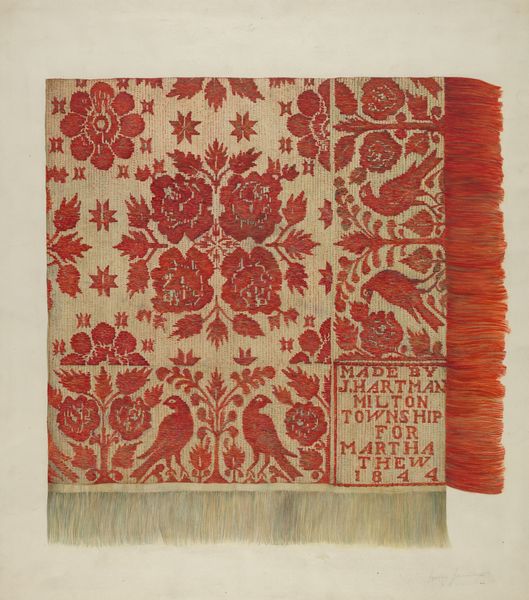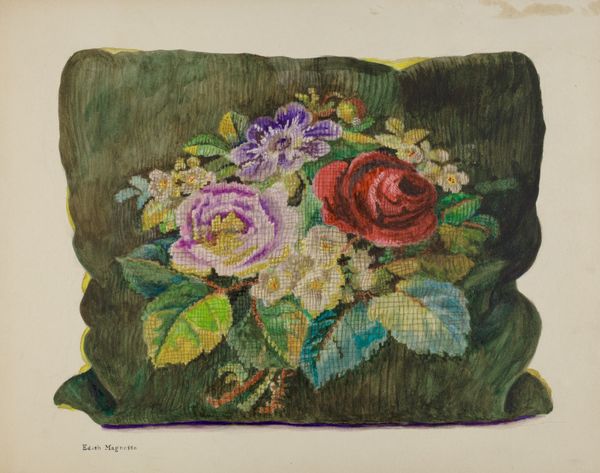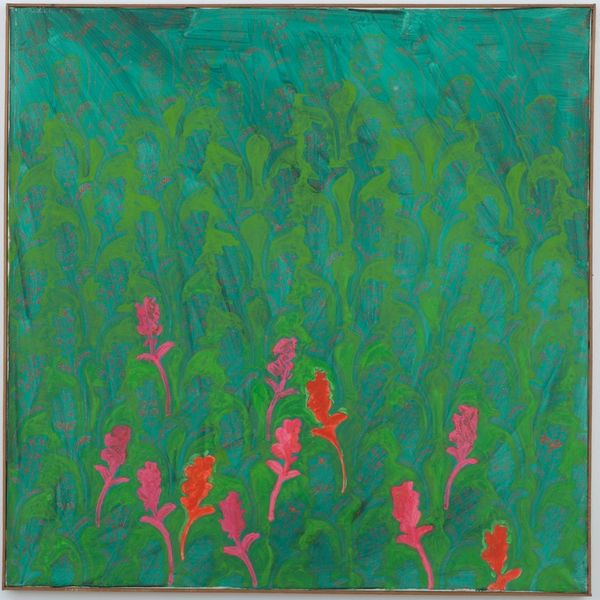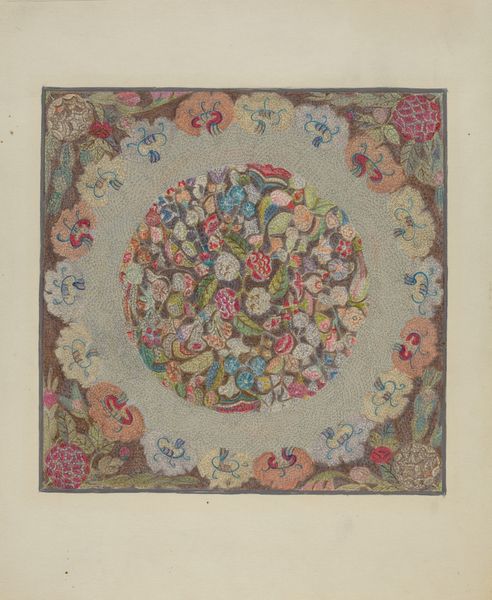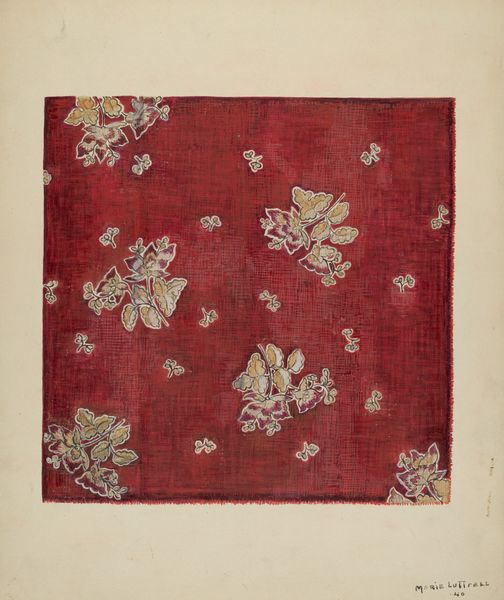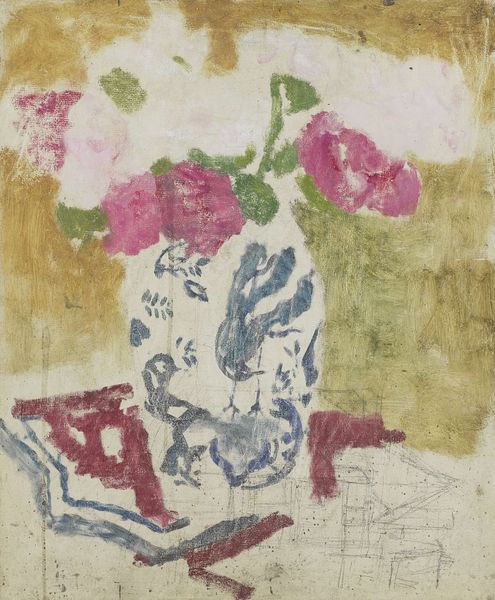
mixed-media, painting, oil-paint, textile, impasto
#
mixed-media
#
painting
#
oil-paint
#
textile
#
figuration
#
impasto
Dimensions: overall: 55.3 x 54.4 cm (21 3/4 x 21 7/16 in.) Original IAD Object: 40" square
Copyright: National Gallery of Art: CC0 1.0
Albert Eyth created this chenille table cover; we don't have an exact date for it, but we know that Eyth was active in Germany in the late 19th and early 20th centuries. Floral patterns like this were common in European decorative arts. But this table cover also hints at broader social trends. During this period, new technologies allowed for mass production of textiles, making items once reserved for the wealthy accessible to the middle class. Yet, at the same time, there was a reaction against industrialization, as seen in movements like the Arts and Crafts, which advocated for handcrafting. Does this table cover express these anxieties? Is it embracing industry or rejecting it? Analyzing textile designs can reveal a lot about the social, economic, and cultural values of a particular time and place. Researching the patterns popular in German design during Eyth's life, as well as the history of textile manufacturing, might give us some clues.
Comments
No comments
Be the first to comment and join the conversation on the ultimate creative platform.

